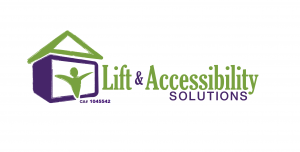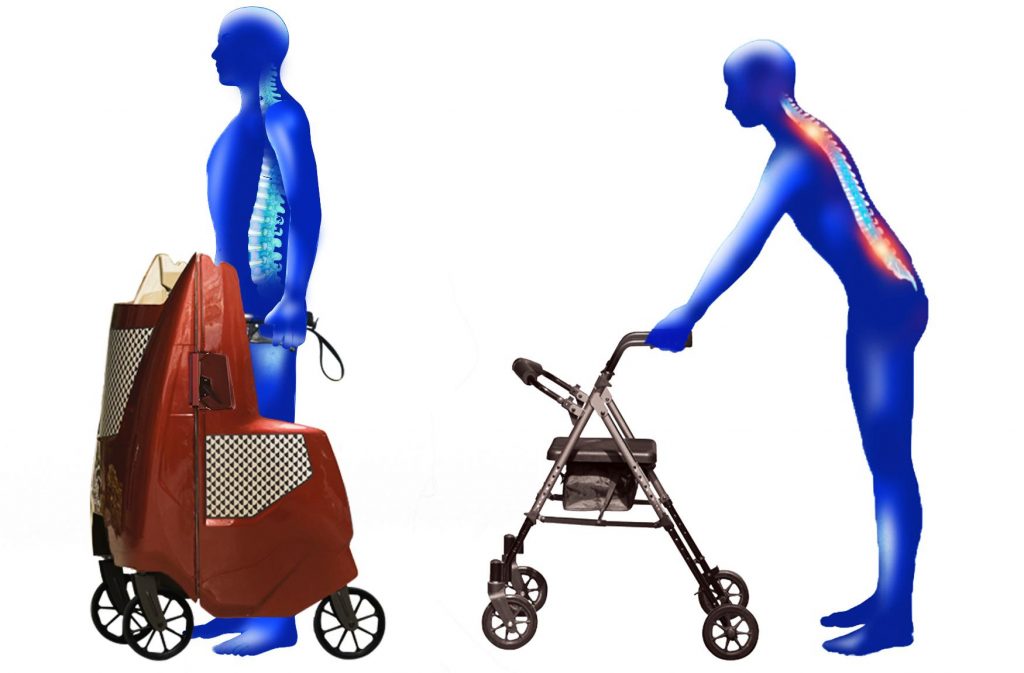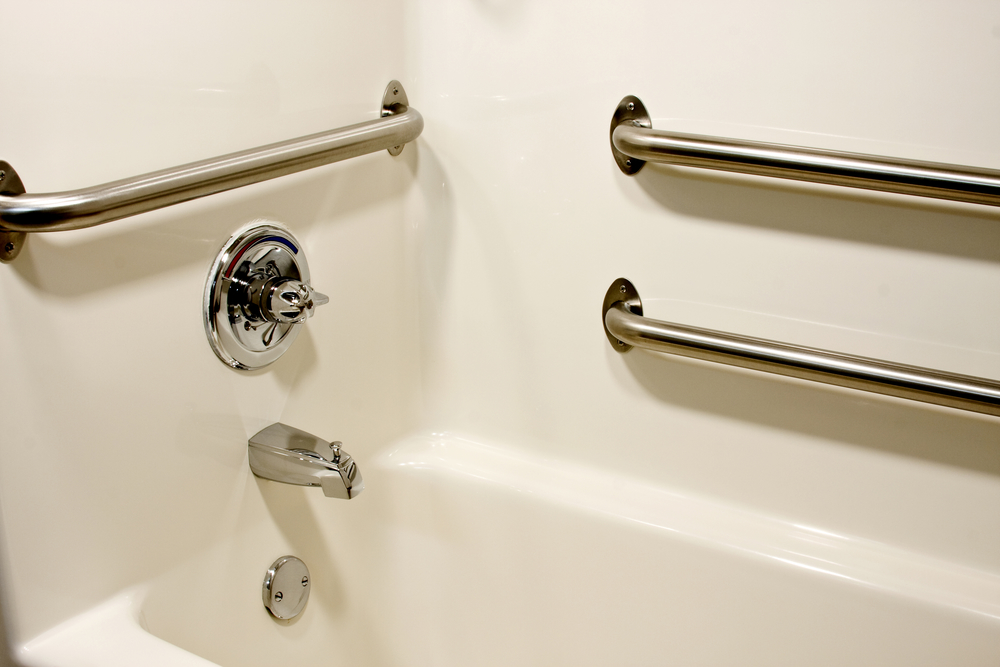15 Sep 2017
Discover the Wonders of the Upright Walker
Over six million people in the United States need to use some type of assistive device to help with mobility. It’s not only the elderly who often need the aid of a walker, wheelchair, or cane. Many young and middle-aged individuals face health issues that make walking unassisted difficult. Multiple sclerosis, Parkinson’s, and Fibromyalgia are a few of the disorders that affect people’s ability to walk. With the advancements in technology and science, strides have been made in aiding people with disabilities. One such advancement is that of the upright walker. This newer product gives people another option for getting around gracefully. Let’s take a closer look at some of the details of the upright walker.
Helps you stand up tall
Traditional walkers are constructed to reach right about the waist level. When using a traditional walker, you set it right in front of you and step behind it. This means you must stoop over and lean down into the walker to walk. The upright walker got its name in part because it helps the user stand upright when walking. The handles are elevated to a height that allows people to have the walker at a comfortable height. People have the ability to look straight ahead instead of down at the pavement. This makes them more safe and comfortable.
Framework for the upright walker provides safety
The framework of the upright walker surrounds the user on both sides and allows for a footstep of room. This means as people move forward, they are boxed in on each side for their entire movement. With traditional walkers the frame is set in front of you so that if you stumble to the side for any reason, there is nothing next to you. The upright walker is beside you every step of the way. If you would stumble to the side, you would have the support of the framework on both sides to help balance you.
Shock absorbers and brakes
The upright walker is somewhat like a bike with mini tires and shock absorbers. This helps move you along bumpy terrain without all the jostling. Uneven surfaces are no problem with the use of an upright walker. In addition, you grip handles with brakes that extend from the armrests. If you need to stop yourself from moving along or you’re going down a slight hill and need some brake power, you will have it at your fingertips.
Discover the ease and comfort of walking with the upright walker. Whether you need to go around the block or to the mailbox, using this innovative product will make walking so much easier.
As people age, they may start to need assistance in getting around in everyday life. There are many ways to ensure these individuals have the help they need and can move about on their own with dignity. Particularly if you are caring for an aging parent in your home, it is wise to consider installing grab bars in trouble areas. A few trouble areas to consider are mainly the bathtub, toilet, shower areas, as well as bedsides. The reasons and benefits of why you should install grab bars are pretty straightforward and obvious: safety, safety, safety. Here are a few different types of grab bars and their benefits to you or your family member in need.
A Vertical Pull Grab Bar
This particular grab bar is great for multiple locations, including bedroom, bathroom, and living room. It usually comes as an adjustable length bar and often has a curved grab bar attached at a perpendicular angle. This curved grab bar is either fixed or is adjustable as well to suit varying heights of users. This bar is great for helping people to pull themselves up from a seated position. Additionally, this bar is great if you live in an apartment which won’t allow you install permanent fixtures. The vertical grab bar usually features rubber stoppers on both ends. When you adjust it to the proper height to fit the space, it should fit snugly and securely against floor and ceiling.
A Horizontal Grab Bar
This is probably the most common type of grab bar which people choose to install to assist limited-mobility family members. They can easily be installed just about anywhere they are needed. A horizontal grab bar provides a stable spot for someone to reach for. Never install a grab bar at an angle. This is especially true if you are installing the bar in a wet environment, like the bathtub or shower. “Slippery when wet” comes to mind; if the bar is at an angle and is wet, the likelihood someone will slip increases dramatically. Their hand is much more likely to slide or slip if the angled bar gets wet. Install the bar either completely horizontally or completely vertically. There are permanent, metal horizontal grab bars which you can install. Also, you might need to consider a temporary suction cup bar. Maintain extra caution with these “temporary” grab bars. The suctions cups don’t always remain suctioned to their surface and can fall! But if you live in an apartment which absolutely refuses to let you install anything permanent, these are better than nothing.
Clamp-on Safety Bar
This type of safety bar is especially good to consider if, again, you live someplace that will not allow you to install a permanent solution. This grab bar features dial down clamps that securely grip the edge of the bathtub. Then an adjustable clamp bar (typically in an upside down U shape) extends vertically to your preferred height to provide a grip. This is a great, non-permanent solution to provide someone a little extra help getting in and out of their bath safely.
02 May 2016
5 Tips for Making Bathrooms Safer for Seniors
Whether you are taking in your older parents who need a little extra assistance, or you have found yourself struggling to move about with ease, there is plenty of help available to you. There are a number of small safety devices you can add to your home or even to your bathroom, a dangerous environment even when you have a perfectly healthy body. So here are just a few extra ways to make your bathrooms safer for those who need just a little extra assistance.
1. Support Bars. No assistance-friendly bathroom could hope to call itself as such without support bars everywhere. Support bars provide a solid point of help to anyone who needs them. It’s a good idea to have one next to the toilet and one in your shower, at the very least. It is best to always install your support bars horizontally because diagonal bars can actually increase the chance of someone slipping.
2. Skid proof trouble surfaces. We’ve all slipped while stepping out of the bathtub before, it’s as inevitable as taxes. It is an excellent idea to be sure and skid proof your bathroom. Get rubber mats with slip-resistant surfaces to help reduce the chance of slips when you step out of the shower. Another good product to get is safety treads for the tub itself. These are relatively inexpensive and take only a few minutes to apply to the bottom of your tub. These add texture to the tub’s otherwise slick surface and they will significantly reduce the chances of anyone having an accident.
3. Shower seat. This is typically just a small, fold-out bench that can be anchored directly to the wall and then unfolded when needed. This accommodating bench will be great for those who cannot stand for long periods of time. There are also shower chairs for a removable option.
4. Raised toilet seats. Often it is difficult for seniors to lower or raise themselves any sort of significant distance. One thing to consider is that toilet seats are often fairly low. You may want to look into getting safety equipment for your toilet, especially a raised seat that will add several inches to the toilet, making it easier for you senior to access. These toilet boosters usually include additional safety railings for installation immediately around the toilet itself, rendering further aid.
5. Adequate Lighting. This may not immediately grab your attention as being a safety requirement. However, adequate lighting can go a long way toward helping seniors who may not be able to see as well. Good, strong lighting will help them to be able to see any obstacles in their way and more easily see the edges of any steps or rugs.







